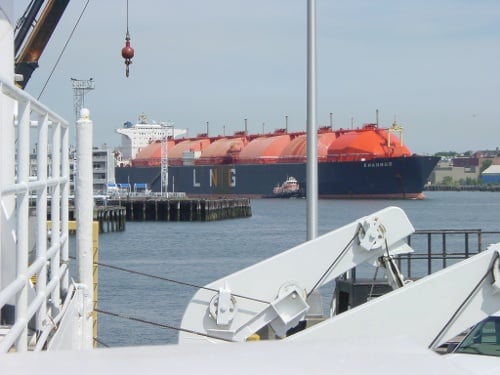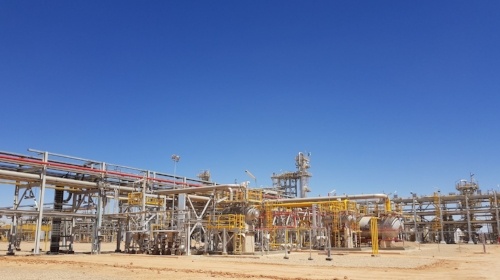3 min read
A New Look At Sovereign Oil Hedging Strategies
Last December, in a post titled Sovereign State Oil Hedging On The Rise, we highlighted the hedging initiatives of several sovereign oil and gas...

Over the course of the past few months we've met with numerous government ogranizations and state owned companies, both producers and consumers, regarding hedging their oil and gas revenues or costs, respectively. Some of these have been hedging for many years while others are just beginning to look into the matter for the first time or at least the first time in many years.
If you follow the energy commodity markets, you'll likely aware of the Mexican government's oil hedging program as it's in the headlines quite often and for good reason, approximately one third of the Mexican government’s revenue is attributed to oil and gas, revenue which the SCHP (Secretaría de Hacienda y Crédito Público) has regularly hedged for many years. According to Fernando Aportela, undersecretary of the SHCP, "The oil hedging programme for 2015 provided $6.3 billion in revenues for the federal government, providing key support for the budget. The programme is a key element of Mexico's risk management strategy that eliminates the short-term public finances exposure to oil-price reductions." Various market sources see the country's 2016 hedges (which were placed in the $49/BBL range) resulting in a gain of $2-3 billon. In August the country's Finance Ministry announced it had hedged its 250 million barrels of its 2017 exposure with put options at an average price of $38 per barrel at a cost of $1.03 billion. While Mexico is clearly the leader when it comes to government-producer hedging, others are taking a look at it as well.
Last March, government oil hedging was a hot topic of discussion at Canadian Energy Research Institute conference. While the focus of the discussion was on hedging Alberta's oil and gas revenue, other oil reliant provinces such as Saskatchewan and Newfoundland were part of the discussion as well. That being said, none of the Canadian provinces have moved the discussion forward since then. In an interview with CBC, Lowell Epp, assistant deputy minister at Alberta's Finance Department summed it up as follows, "We've thrown hedging up the line a number of times over the last 10 or 12 years and we've gotten varying levels of support. At some point, it would be the public service's job to throw it back up the line."
Last January, the Financial Times reported that the Russian finance ministry would "Prepare the technical infrastructure necessary to implement an oil hedging programme like that of Mexico." However Russia wasn't content with hedging at the then current, lower prices, an intelligent decision in hindsight but it could easily have gone against them as well. Per the FT article, Maxim Oreshkin, Russian deputy finance minister said, “To begin with, we will work out the technical aspect: if we add this instrument to our arsenal, then later we can decide to use it or not in accordance with the situation at the time. Now we don’t even need to think about it — at current low prices it is a theoretical exercise.”
Some US states which are heavily dependent on oil and gas revenues are considering hedging programs as well. For example, according to The Journal Record, an Oklahoma state representative is said to be working with the state's treasurer's office to research the idea. That being said, the idea will clearly face some opposition, despite the support of industry veterans such as Jeff McDougal of JMA Energy. According to The Journal Record story, “If it’s good enough for all the oil and gas companies, why wouldn’t it be good for the state?” is how McDougal summed up the idea.
Perhaps the most interesting, recent story on the consumer side comes out of Uruguay, which announced in June that it worked with the World Bank to implement a hedge for approximately 50% of its oil imports for the coming 12 months, the first commodity hedge transaction between an emerging market sovereign state and the World Bank. In the announcement published by the World Bank, Danilo Astori, Minister of Economy and Finance of Uruguay said the following about the transaction. “As a net crude oil importer country, oil price increases can have a big impact on individual consumers, on businesses, and on the government´s budget. Protecting the economy against global volatility is a key pillar of the government`s risk-management framework, underpinning macro-financial resilience and reducing fiscal risks. The support and active involvement of the World Bank was instrumental in setting up this full-fledged oil hedging program, providing technical expertise to manage it and sustain it over time“.
On the other hand, much of the press regarding consumer or importer government oil hedging programs isn't so positive. Case in point - the Jamaican government has faced much criticism about their oil hedging as highlighted in this article titled Government Oil Hedge Underwater. According to another article which surfaced last week, the criticism's of Jamaica's previous hedges are creating an opposition to extending the program.
Then there are the flag carrier airlines. While some have certainly experienced great results thanks to their fuel price risk management programs, the press seems to like highlighting the not so great results. As an example - Cathay Shares Drop as Profit Slumps 82% on Fuel Hedge Losses. On the contrary, the likes of Air India have been reported to have increased their fuel hedging volumes due to the lower prices available last spring. Of course there were also plenty of articles highlight the benefits of airlines being unhedged in a lower price environment i.e. Chinese Airlines Skirting Fuel Hedge Profit From Plunge in Oil. Yet we have seen few articles which address those same airlines having been completely exposed to oil prices doubling since trading in the $27-28/BBL range last January, a topic we will be covering in depth in the very near future.
Other such as Ghana have previously hedged both their oil revenue and their oil imports. According to various reports, the country abandoned their oil revenue hedging program last year as "oil prices stabilized" but according to Energy Ghana, the country was, as of June, looking to resume the program once again.
Despite the fact that oil prices are no longer as attractive to a consuming or importing government as they were last January, the low prices of the time resulted in some intriguing articles being written which laid out why and how a sovereign state could utilize the financial markets to hedge their oil price risk. Despite being more speculative (as it relates to commodity prices) than we tend to recommend, Amit Bhandari's article Financial Hedge for India’s Oil Risk is worth a read.
In summary, while there aren't any easy answers to managing government oil and gas revenues and expenses, as the above examples indicate, many have determined that hedging is or should be at least part of the solution.

3 min read
Last December, in a post titled Sovereign State Oil Hedging On The Rise, we highlighted the hedging initiatives of several sovereign oil and gas...

2 min read
Given the decline in oil prices we've recently received several inquiries asking who is well hedged and who is not, particularly among the various...

1 min read
Over the course of the past few days we've received several reports that Mexico has begun to execute it's 2014 oil hedging program, so we're going to...